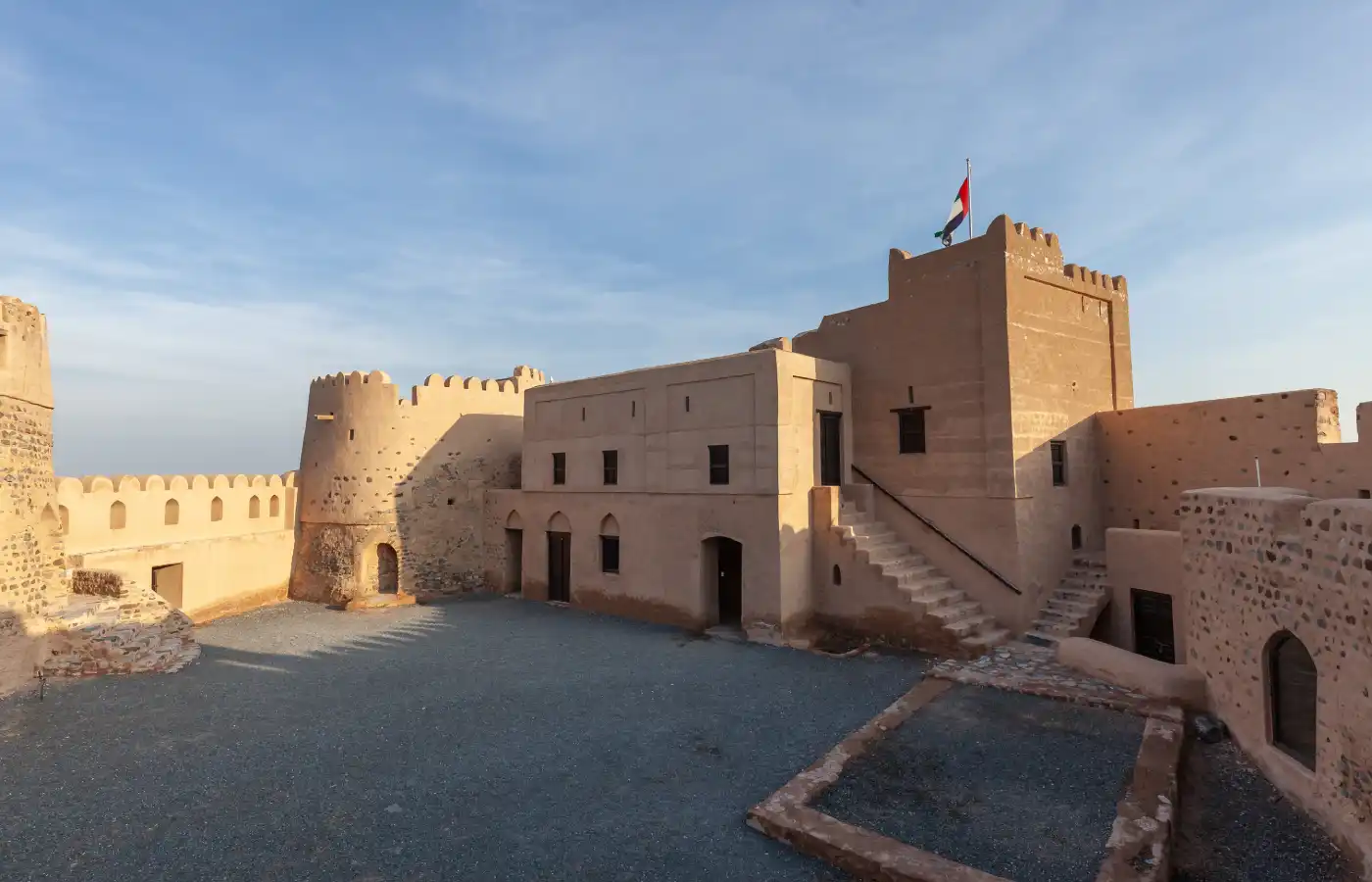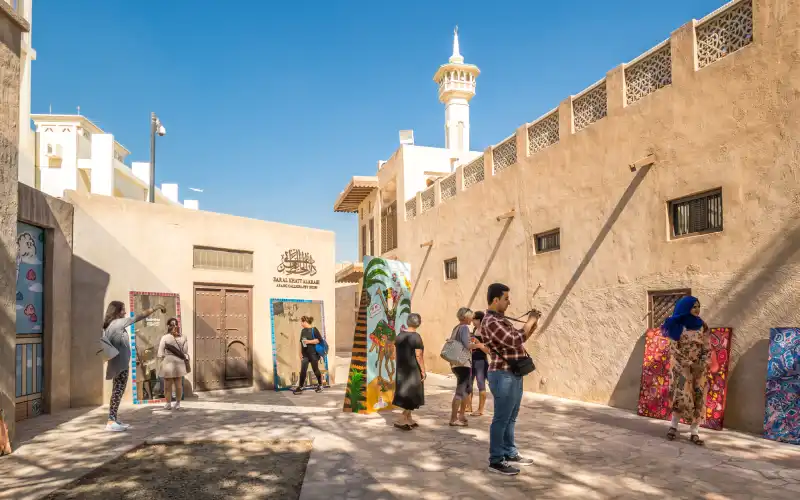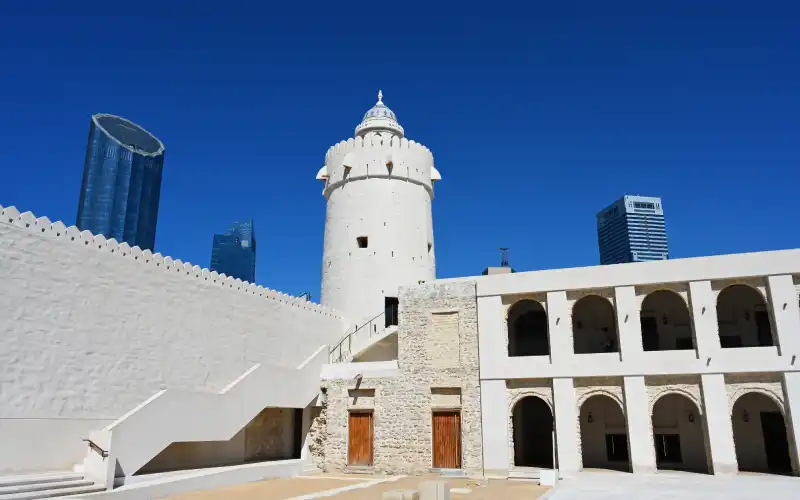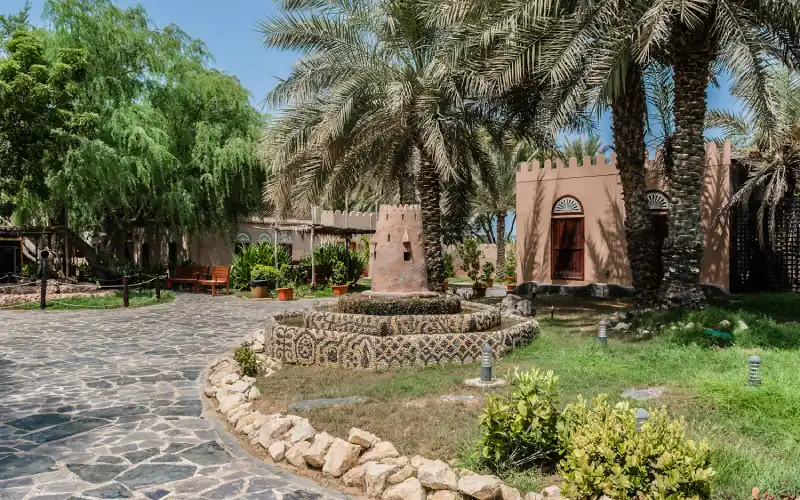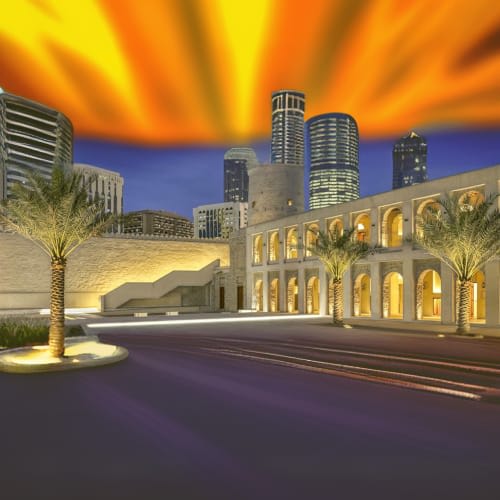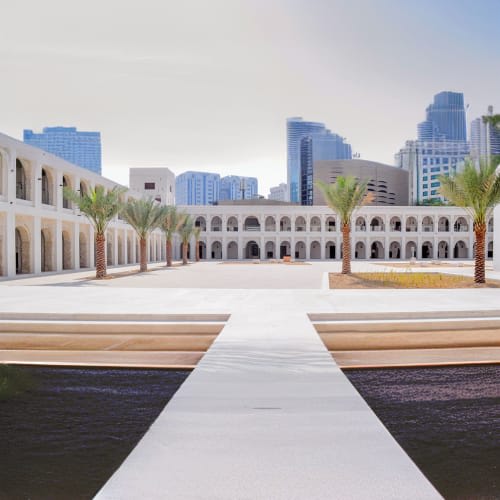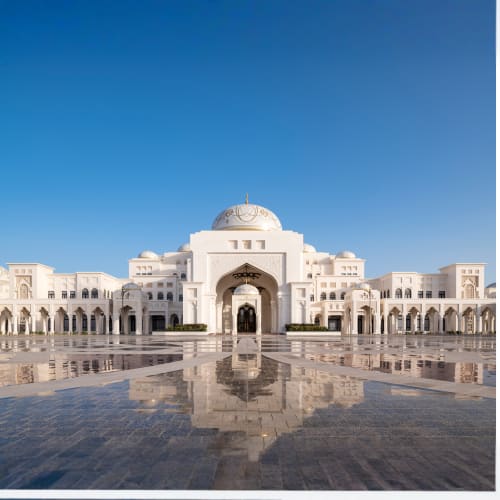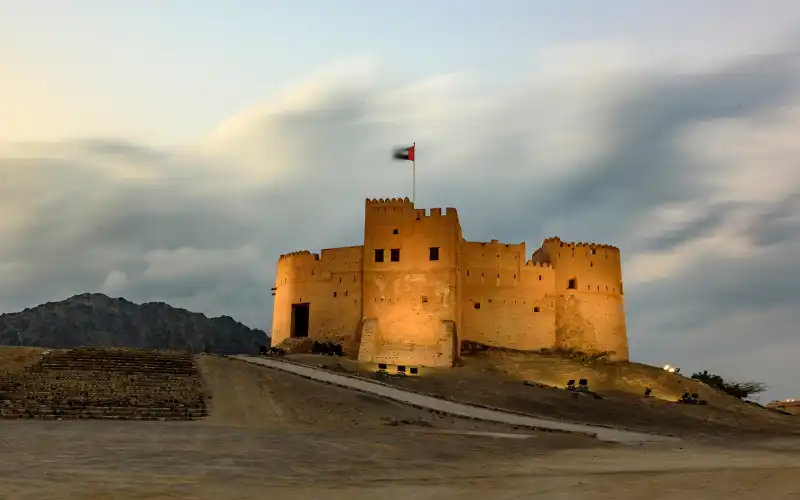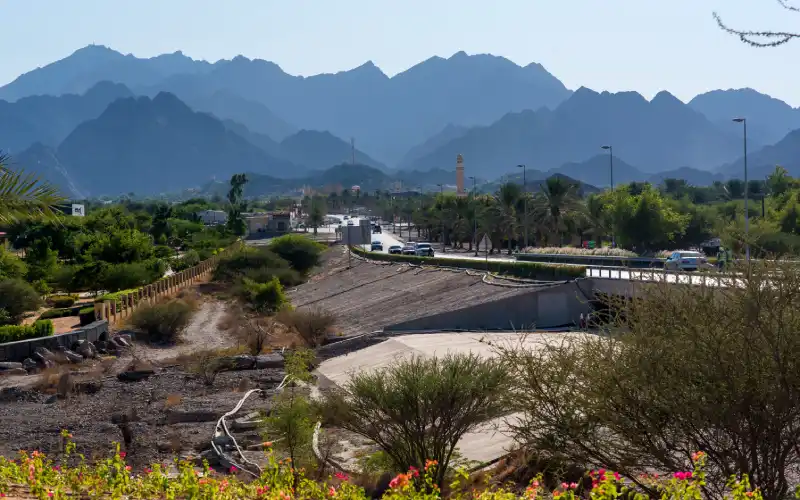The image of the United Arab Emirates constitutes glossy buildings, world-class infrastructure, and luxuries fit for royalty. But before the UAE became a glamorous city, it was a home to a civilization that was rooted in nature and traditions. The UAE of yesteryear was all about desert forts, ancient oases, humble villages, coral-stone houses, and simple living. Even with all the growth and development, this Arab country has been able to preserve its rich cultural heritage and tradition through its various historical sites. Here we present to you some of the sites that are guardians of the UAE heritage.
Best Heritage and Cultural Sites in the UAE
Al Fahidi Historical Neighborhood
Formerly known as the Bastakiya Quarter, Al Fahidi Historical Neighborhood plays a pivotal role in the history of Dubai. It is part of the Dubai Heritage Express Tour. Established in the late 19th century, this is a place where the Persian merchants arrived. The area is made of traditional homes made of sandstone, sandalwood, gypsum, teak, and palm wood. But what makes them unique is the presence of wind towers that let breeze into the homes.
Most of these houses have been turned into museums, cafes, and art galleries. The Dubai Museum is one of the most important museums here, as it is located inside the oldest building in the city and because it gives you a peek into the earlier life of the city. You can walk through the winding lanes to admire the quaint atmosphere of the place. While you can visit Al Fahidi anytime during the day, it is best to visit after sunset. The lights flooding the area give the entire place a beautiful glow.
Qasr Al Hosn: Abu Dhabi’s Oldest and Most Iconic Fort
One of the most significant historical places in UAE is Qasr Al Hosn. Built in 1761, it is considered the origin of Abu Dhabi. It is known as the oldest building in the emirate although it has undergone numerous changes and alterations over the centuries. In the beginning, Qasr Al Hosn Abu Dhabi was a watchtower used to protect the sole freshwater well in Abu Dhabi. Later it was extended to a fortress and a palace, which housed the royal Al Nahyan family. The royal family lived in this palace until 1966. It also housed the National Consultative Council, which was founded by Sheikh Zayed bin Sultan Al Nahyan.
Today, it has been converted into a museum and cultural landmark, where you will get to see artifacts that date back to 6000 BCE. Apart from getting to know the history of the place through the numerous exhibits, you will also get to see live demonstrations, workshops, and shows by local artists. The place also hosts a 10-day Qasr Al Hosn festival every year. You can visit this place by booking the Abu Dhabi Cultural Heritage Tour.
Step Back in Time at Abu Dhabi Heritage Village
Although not a historical place, the Abu Dhabi Heritage Village is a place you must visit if you want to glimpse into the cultural heritage of Abu Dhabi, especially during the pre-oil era. The Heritage Village in Abu Dhabi is a reconstructed village complete with traditional Bedouin tents, a souk, and a mosque as well. As you walk around the different exhibits, you will get to see traditional weapons, jewelry, and artifacts. You will also get to see live demonstrations of pottery, weaving, glass blowing, spinning, and metalwork by skilled local artisans. The place also hosts workshops and classes to educate people on Emirati traditions. There is also a section where you can indulge in shopping for local handicrafts and products.
Al Bidyah Mosque
The UAE is home to some of the grandest mosques in the world. But not many know that it is also houses one of the oldest mosques in the region. Al Bidyah Mosque in UAE’s Fujairah is believed to be built somewhere around the 15th century. Located inside a rectangular yard, it is a square-shaped mosque that is made of stone, mud, and hay. What makes it unique is that the four domes of the mosque are unequal in size, something that can be rarely seen in the modern Emirati mosques. However, it is not a rudimentary mosque. Rather, you would find archeological carvings and petroglyphs on the stones and walls here. The best part is that Al Bidyah Mosque is still a functional mosque, where prayers are conducted five times every day.
Fujairah Fort and Heritage Village
Another spot in Fujairah that reflects the heritage of UAE is the Fujairah Fort and Heritage Village. Built in the 16th century, Fujairah Fort defended and protected the city from invaders. In fact, the fort played a significant role in the British invasion in 1925. But Fujairah Fort is not the only place you get to see here. On the other hand, the fort is a part of the Heritage Village that preserves the Emirati life and culture of the times gone by. Here, you will get to see traditional Bedouin houses made of mud and bricks along with date leaves and twigs. You will also get to visit several tents that showcase the routine activities of the Bedouins in the past. One of the interesting things to do here is sip on the local Arabic coffee or kahwa which is a strong coffee made with different spices, including cardamom.
Sharjah Heritage Area
Sharjah, considered the cultural capital of the UAE, is a short drive away from Dubai. In fact, you will easily find a Sharjah city tour from Dubai. However, if you are visiting this emirate, a visit to Sharjah Heritage Area is a must. Also called the Heart of Sharjah, this is a complex that houses numerous restored historical and cultural landmarks and buildings. One of the most significant attractions here is the Sharjah Heritage Museum, which includes five galleries that give you an insight into the everyday life of the Emiratis, including wedding ceremonies, birth and death rituals, folk medicine, and lots more. Another attraction here is the Calligraphy Museum, where you will see the works of celebrated Arab calligraphy artists. There is also the Bait Al Naboodah, a restored family villa. During your visit to the Sharjah Heritage Village, you will also get to explore Souk Al Arsah, which is the oldest souk in the UAE.
Hatta Heritage Village
Located near the mighty Hatta Mountains in Dubai, the Hatta Heritage Village replicates the traditional mountain life of the Emiratis. This is a living museum that houses old forts, houses, watchtowers, and more. There is Bait Al Wali, the old emirati house of a local ruler, which has been turned into a museum that showcases the life of the Emiratis. Then there is the 19th century Hatta Fort and Hatta watchtowers, which protected the area from attacks. An interesting place to visit is the Hatta Heritage Museum, where you will find artifacts, jewelry, clothes, and tools from ancient times. Also, do check out the Hatta Falaj System or irrigation system. You can also indulge in adventurous Hatta Wadi activities such as hiking, kayaking, camping, and mountain biking.
Al Ain Oasis
Many would be surprised to know that a place like Al Ain Oasis exists in the desert land of the UAE. In fact, this garden city has been in existence for 4000 years now. What makes this place special is that Al Ain Oasis is the first site in the UAE that was recognized as a UNESCO World Heritage Site. Spread around an area of 1200 hectares of land, Al Ain Oasis is home to more than 147,000 date palms that produce over 100 types of dates. The thing that makes it even more interesting is the irrigation system that helps water the entire system. Known as the falaj system, this is an irrigation system that has been used in the area for more than 3000 years. Apart from wandering around the oasis, you also get to visit the eco-center here, where you will get to know about the history of the place through multimedia exhibits. You can tour the place via a buggy or a bike tour.
Conclusion
The historical and cultural heritage of the UAE has stayed intact for centuries, even amidst the oil revolution and modernization of the country. If you want to know the real UAE, beyond all its glamor, a visit to these heritage sites is a must. So, do make a point to visit at least a few of these sites during your trip to the UAE.
Frequently Asked Questions
